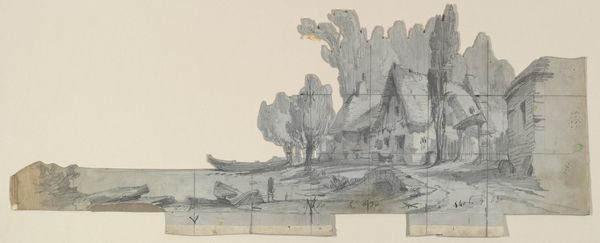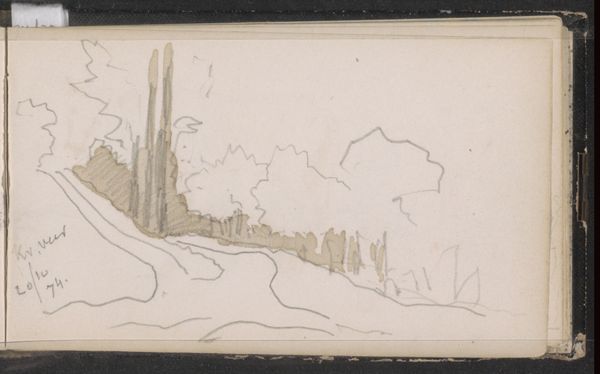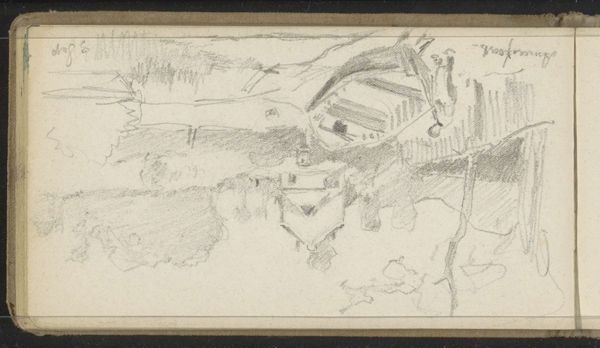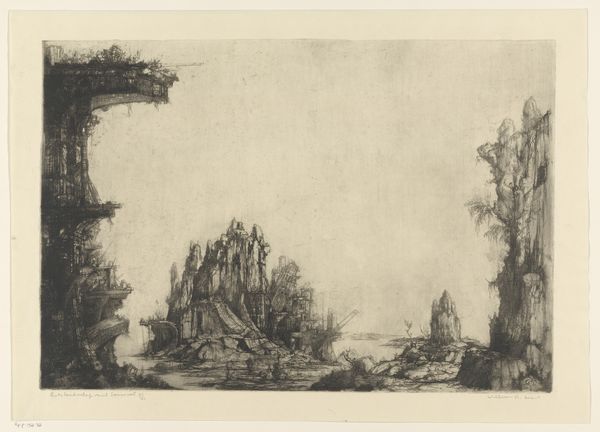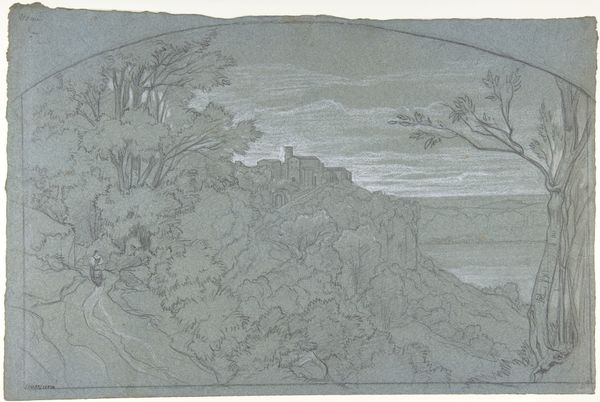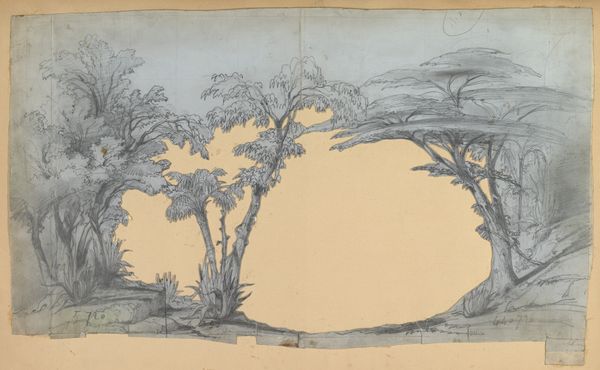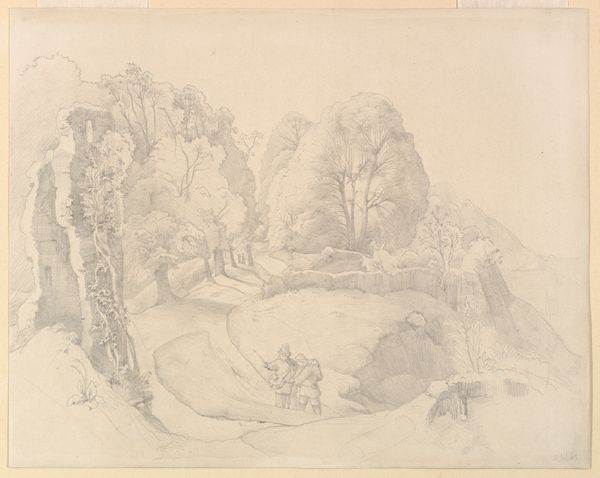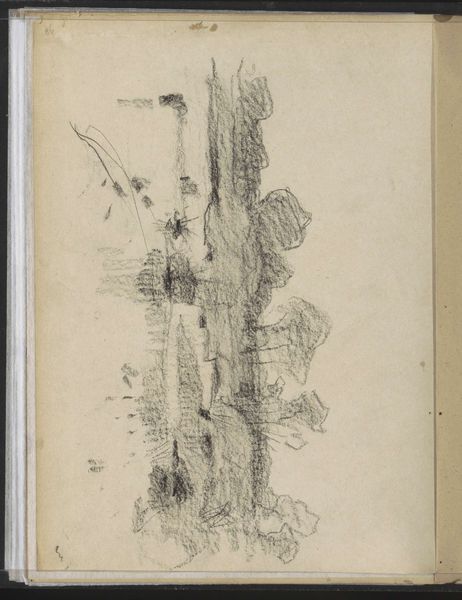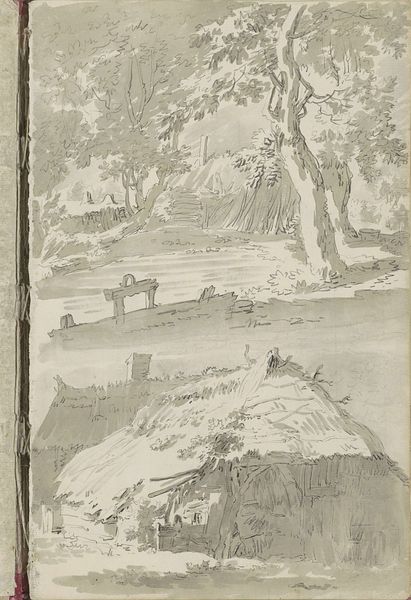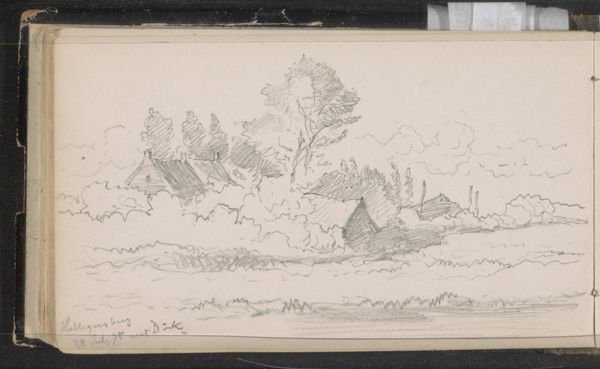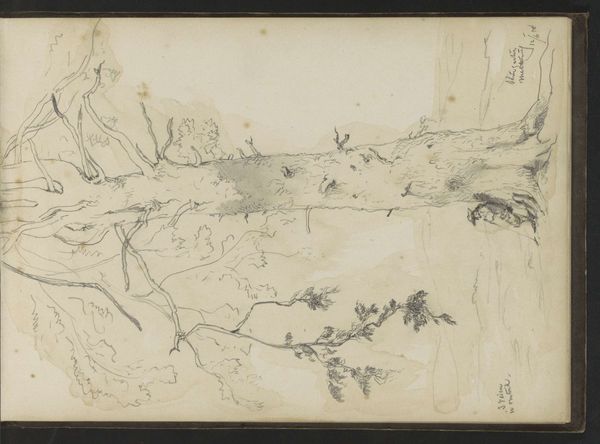
Design for a Stage Set at the Opéra, Paris 1825 - 1890
0:00
0:00
Dimensions: Irregular sheet: 11 7/8 x 7 7/16 in. (30.1 x 18.9 cm)
Copyright: Public Domain
Curator: Here we have Eugène Cicéri's "Design for a Stage Set at the Opéra, Paris," created sometime between 1825 and 1890, rendered in pencil and print. The Romantic style evokes a scene both idealized and touched by human construction. Editor: My first impression is one of melancholy, of looking at something just after the curtain has fallen. It's all soft grays and a palpable quietness. There's something mournful in that pale light. Curator: That's a very insightful read. Consider how the ruins are situated within a manufactured landscape, and framed by meticulously rendered nature. The landscape isn’t completely wild. What do these curated symbols mean in performance? Editor: The stage set suggests a commentary on power, perhaps. The manicured elements coupled with crumbling stonework bring forth the life cycle of structures and how authority erodes or shifts over time, especially as this would appear for popular entertainment. Curator: Absolutely, there is that tension. Remember too that stage sets weren't mere decoration, the spaces held their own narratives; a ruin could symbolize the fragility of human achievement, or a longing for a past golden age. It plays with the collective memory of the audience. Editor: In an operatic context, which typically tells stories of love and loss, the landscape becomes almost a reflection of inner turmoil. How much do the artificial features mimic a longing for lost traditions when this was created amid industrial innovation? Curator: A powerful point. Cicéri captured the visual language of his time. And we are decoding that visual syntax through the language of the performance, still centuries later. Editor: I'm left contemplating the stories that unfolded on this stage. It encourages one to think about who created these landscapes, who populated them, and whose stories were elevated within their framework. Curator: And the echoes of those stories still resonate within us, filtered through art and memory. Editor: Indeed. Art prompts us to remember, re-evaluate, and envision a renewed relationship with the past and its implications in contemporary narratives.
Comments
No comments
Be the first to comment and join the conversation on the ultimate creative platform.
